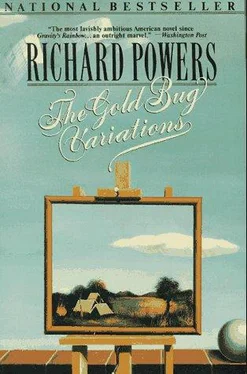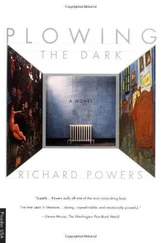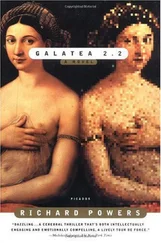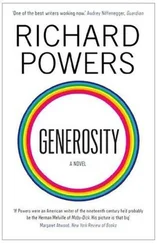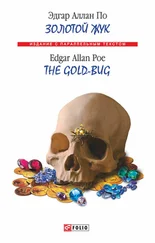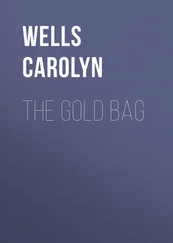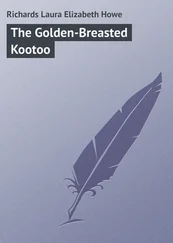Richard Powers - Gold Bug Variations
Здесь есть возможность читать онлайн «Richard Powers - Gold Bug Variations» весь текст электронной книги совершенно бесплатно (целиком полную версию без сокращений). В некоторых случаях можно слушать аудио, скачать через торрент в формате fb2 и присутствует краткое содержание. Год выпуска: 1991, Издательство: Harper Perennial, Жанр: Современная проза, на английском языке. Описание произведения, (предисловие) а так же отзывы посетителей доступны на портале библиотеки ЛибКат.
- Название:Gold Bug Variations
- Автор:
- Издательство:Harper Perennial
- Жанр:
- Год:1991
- ISBN:нет данных
- Рейтинг книги:5 / 5. Голосов: 1
-
Избранное:Добавить в избранное
- Отзывы:
-
Ваша оценка:
- 100
- 1
- 2
- 3
- 4
- 5
Gold Bug Variations: краткое содержание, описание и аннотация
Предлагаем к чтению аннотацию, описание, краткое содержание или предисловие (зависит от того, что написал сам автор книги «Gold Bug Variations»). Если вы не нашли необходимую информацию о книге — напишите в комментариях, мы постараемся отыскать её.
Gold Bug Variations — читать онлайн бесплатно полную книгу (весь текст) целиком
Ниже представлен текст книги, разбитый по страницам. Система сохранения места последней прочитанной страницы, позволяет с удобством читать онлайн бесплатно книгу «Gold Bug Variations», без необходимости каждый раз заново искать на чём Вы остановились. Поставьте закладку, и сможете в любой момент перейти на страницу, на которой закончили чтение.
Интервал:
Закладка:
Here, in the isolation of my books — clunky classroom translations of the original — I learn the first principle of natural selection. Living things perpetuate only through glut. How many ways are there of being alive? My answer lies in a block of code programmed to generate more copies of itself than are lost to execution. Speciation, fracturing into every subniche and supercranny, depends on surplus of offspring in every breeding creature on earth, the prodigal gene.
If the volumes are beyond listing, I try at least to locate life's bookends. How large is the envelope? Living cells have been snagged miles high in the stratosphere. Dives into the deepest sea trench, under several atmospheres, turn up diaphanous fictions that explode before they can be brought to the surface. Bacteria thrive in ice currents and boiling ripples. I look for inhospitable places where living things haven't penetrated. Even in the Sahara's desiccating winds, 4 percent humidity, and 33 °C daily temperature swings, scrub dots the dunes, roots descend fifty feet into sand, grains swarm with microorganisms.
North of permanent freeze, caribou run in herds, rabbit and tundra fox find growth enough to gorge on. Extreme south swells with seals, krill, birds. Inland Antarctica, the least habitable place on earth, has its wingless insects, lichen, mold, even two flowering plants that wait the narrow window of weeks when they can colonize this waste. Living membrane can withstand the absence of energy: nematodes have been kept for days close to absolute zero and thawed out happily.
Newts requisition caves, go pink, lose their eyes. Lungfish solve the formidable flux of tidal flats. Seeds carried in the intestines of migratory birds convert virgin volcanic island. Life lives even inside other forms of itself. Large mammals are walking bestiaries of fungi, mites, fleas, bacterial colonies. A single square inch of my skin hosts ten thousand cells of one bacterium alone. Life survives even my killer city. Dozens of houseguests rustle my cupboards, spread across the shower curtain, bless my bed, raid a refrigerator designed to deny entry. Marsupials knock over my trash cans at night. Peregrine falcons nest under the Verrazano-Narrows.
Some variant of the self-rewriting program succeeds everywhere. Imperialism lies at the heart of my classification problem: life is as particular as each locale it has a foothold in. Any nomenclature I consider founders on the cartographer's one-to-one-scale solution to "How many places are there?" The program ports itself to all four corners, stopping to seed every intermediary, driven by the universal firmware kernel buried inside it. Nothing exceeds like success. Excess of issue. Surplus of offspring. More applicants than vacancies. Overproduction — duplicate, superfluous: waves of generations testing themselves against the landlord. The milt of trout turns whole streams milky. Shrimp are hauled from the ocean in solid blocks. One male ejaculate — on the swings in a dark abandoned playground — releases 300 million half-lives.
I'm convinced of an infinitely moldable instruction set. Shape may be an artificial classification, but how many forms can duplication take? What range of phenotype? After long abstinence, I rediscover the organic paradox, the extremes of living design. Blossoming chaos: a rough estimate of chestnut proteins runs into the tens of thousands. But no algorithm, however long, begins to describe how this tree branches.
Radial, bilateral, transverse; symmetries that change over a life; radical asymmetries. Sea shells unfurl by Fibonacci. Horn, bark, petal: hydrocarbon chains arrange in every conceivable strut, winch, and pylon, ranging over the visible spectrum and beyond into ultraviolet and infrared. Horseshoe crab, butterfly, barnacle, and millipede all belong to the same phylum. Earthworms with seven hearts, ruminants with multiple stomachs, scallops with a line of eyes rimming their shell like party lanterns, animals with two brains, many brains, none. Trees whose limbs root, whose roots blossom, whose leaves.become needles, beakers, flesh traps, detachable emigrants. Animals that expel their organs to eat, that— split down the middle — become their own Siamese twins. Organisms that bud, divide, cross-pollinate. Sedentaries that sprout free swimmers that mate to make sedentaries. Things that breed once and die, that birth perpetually even as they sleep. Females that grow up to become males. Males that convert to females in hard times. Dwarf males that live in the bellies of their mates. Males that bear young. Hermaphrodites.
Extremes in size? I find a figure for my own class: weight difference between blue whale and pygmy shrew. My desk encyclopedia says that Balaenoptera musculus reaches 600,000 kilograms. Suncus etruscus, on the other end, must eat constantly to keep up its gram and a half. The largest mammal is 400 million times heavier than its smallest cousin. And there are creatures 400 million times smaller than the pygmy shrew, smaller than the wavelength of visible light, detectable only in the scatter of electrons. Several thousand could fit inside one human blood cell. Giant sequoias, excluding the immense roots, are three and a half times the longest whale. The Great Barrier Reef is longer than Europe: a composite mass of two hundred species of polyp a fraction of an inch long, a living superspecies spreading in sovereign continent visible from outer space.
Genomes range from a few thousand base pairs for the simplest self-replicating element to a few billion for humans. Genotype spread, less extreme than phenotype ratios, is more dramatic. The length of the program does not express the ripple effect of increasing complexity. The entire genome of a bacteriophage — so simple it only just slips into the most liberal definition of life— could be printed in a book the size of a grocery-store romance. Yesterday, I thought it would be only a matter of time before we mapped out the entire program of such a creature. Today, I discover the feat is already years old: Sanger etal., 1977: the complete 5,375-nucleotide text for the X174 virus deciphered. The simplest-known, perhaps the simplest-possible living program, but a universe beyond the most complex inanimate matter. Nine proteins long, the viral bible is written with an ingenuity beyond the most sophisticated human hackers. The sequence coding for one protein hides the sequence for another, the way the phrase "a lisp in a chromosome" embeds the name of a leafy green.
How much more complicated can the card deck get? My molecular research only begins to hint. Bacteria trap energy, metabolize and manufacture compounds, sense their environment, go dormant indefinitely, synthesize their own enzymes, Xerox themselves. Their leap beyond viruses is larger than viruses' from inanimate compounds. Larger than the leap from my amateur's notes to Ressler's knowledge.
I read how cells develop distinct nuclei and organelles, acquire the trick of mashing other cells and recycling their parts. I struggle with an unthinkable threshold: the formation of limited partnerships, shared responsibilities. You float, you sting, you prop, you flex, you digest: we feed. Geometric increases in complexity: anagenesis exists. Something rises, flies in the face of entropy. Not better or wider or finer fits; bacteria can already live locked in ice, hot springs, even stratosphere. The code simply learns to do more with the place.
The arrangement of cells into bureaucractic corporations takes me two tiers above X174, itself nine proteins beyond my comprehension. I move into a mystery uninterpretable even in outline. Form — the ravelins of a starfish, the rococo redundancy of crabs— reveals itself as mere vessel for behavior, infinitely more varied. Evade this stimulus. Fly in this formation. Migrate at this moment. Build this burrow. Train your young.
Читать дальшеИнтервал:
Закладка:
Похожие книги на «Gold Bug Variations»
Представляем Вашему вниманию похожие книги на «Gold Bug Variations» списком для выбора. Мы отобрали схожую по названию и смыслу литературу в надежде предоставить читателям больше вариантов отыскать новые, интересные, ещё непрочитанные произведения.
Обсуждение, отзывы о книге «Gold Bug Variations» и просто собственные мнения читателей. Оставьте ваши комментарии, напишите, что Вы думаете о произведении, его смысле или главных героях. Укажите что конкретно понравилось, а что нет, и почему Вы так считаете.
